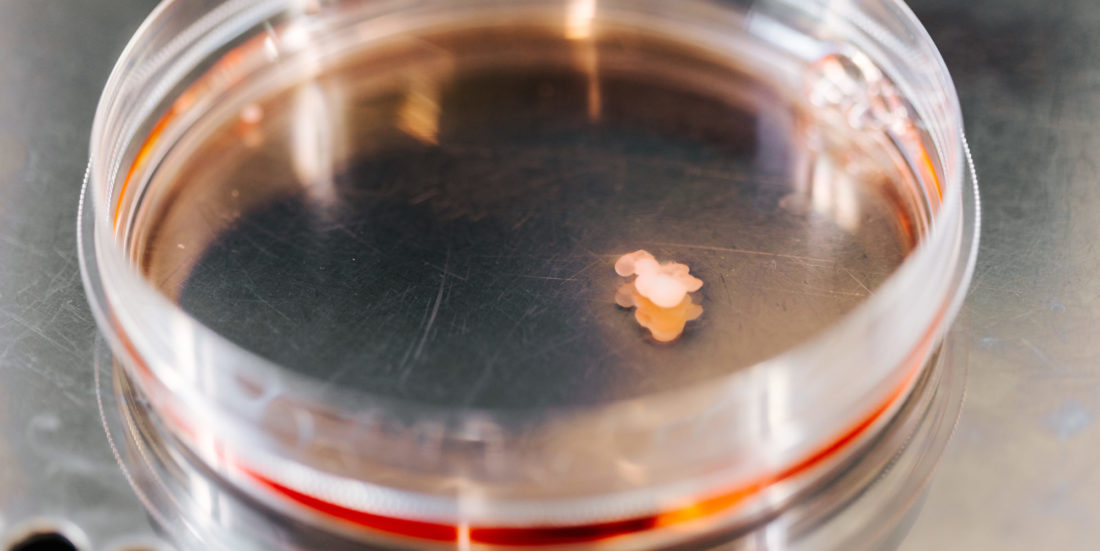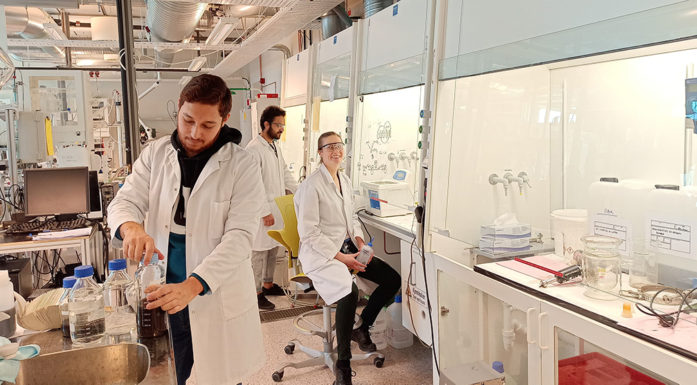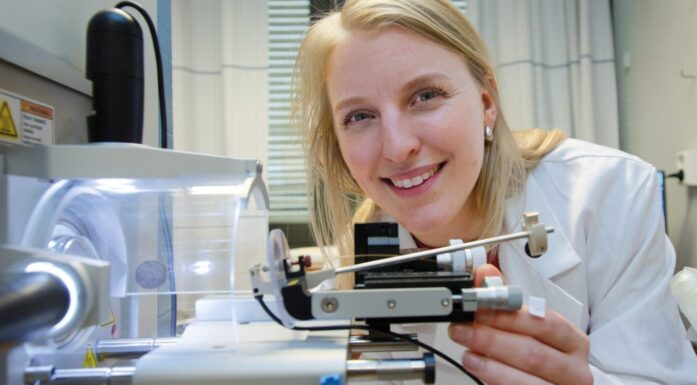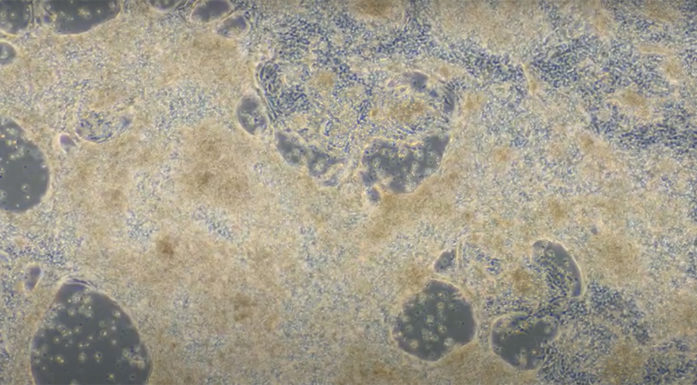New therapy can treat rare and hereditary diseases
Scientists are on the hunt for treatments for diseases that have been deemed incurable.
A lot of research has been done over many decades on diseases that are widespread in large parts of the population, such as cancer and heart disease. As a result, treatment methods have improved enormously thanks to long-term research efforts on diseases that affect many people.
However, there are many diseases that affect just a handful people. These diseases often fly under the radar and are far less studied. They include quite a few rare, hereditary diseases, such as DOOR syndrome, which is often found in Canada and the Middle East.
A team of scientists is now in the process of trying to change this.
“For some hereditary, rare diseases, there is currently no cure. However, gene therapy is a possible solution, and we are now testing various strategies using gene therapy,” says Magnar Bjørås, a professor at NTNU’s Department of Clinical and Molecular Medicine.
He has established a research team at NTNU and Oslo University Hospital that conducts basic research on rare, hereditary diseases with a long-term goal of finding new gene therapiesGene therapy is the transfer of genetic material to cells to treat disease or to influence biological functions. Gene therapy is currently only tested on diseases for which there is no other treatment. Read more about this in the fact box at the bottom of the article..
What is particularly interesting about the protein OXR1, which DOOR patients lack, is that this gene therapy also has a potential for the treating other diseases.
Brain cells become dysfunctional or die
DOOR syndrome is a congenital disorder that involves multiple abnormalities. DOOR is an acronym for the main features of the disorder: Deafness, Onychodystrophy (short or absent nails), Osteodystrophy (short fingers and toes) and developmental delay and intellectual disability (previously called mental Retardation).
DOOR syndrome is hereditary and is caused by the lack of a specific protein in the genes called OXR1 (OXidation Resistance gene 1).
“Due to lack of this protein, the brain cells are unable to develop as they should. As a result, the brain cells either become dysfunctional or simply die,” says Bjørås.
In order to investigate whether there is a way to prevent this from happening, the Bjørås team has carried out tests inside mini-brains that they grow in their lab.

Professor Magnar Bjørås at the Department of Clinical and Molecular Medicine. Photo: Geir Mogen, NTNU
From skin cells to mini-organs
The Bjørås team has been working on growing mini-organs such as mini-brains, mini-lungs and mini-eyes since 2018. The scientists use the mini-organs to test drugs and gene therapy.
In order to grow mini-brains for their research on DOOR syndrome, the research team needed cells from people who have this disease.
A number of cases have been registered in Canada and the Middle East, and the research being done in Norway is based on skin cells from people who have DOOR syndrome.
“In the laboratory, we have transformed the skin cells into embryo cells. We have reversed the development in the skin cells so that they return to the foetal stage and become like the first cells that form in humans. We have then used these stem cells to create mini-brains,” says Bjørås.
Using skin cells from people with DOOR syndrome, the scientists have recreated the disease in the mini-brains. They can then use these mini-brains to test out therapies for this disease.
The process of developing mini-brains takes several months and is painstaking and expensive.
- You might also like:Researchers are making mini-brains from skin
Starting production of the missing protein
The work has given the scientists insight into the reasons why patients develop disease – and thus also ideas for treatment strategies. Gene therapy is one possible treatment where the brain cells can be made to start producing the missing protein.
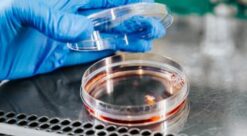
Researchers use petri dishes like this to grown mini-organs from skin cells. Photo: Julie Gloppe Solem, NTNU
A virus is actually used as a messenger that delivers the necessary production information to the brain cells.
“As a follow-up to our published work, we are now testing virus-based gene therapy as a treatment for this disease,” Bjørås says.
“We create a harmless virus in the lab and then put a healthy OXR1 gene into the virus’ genome, and this gene has the ability to produce the protein that brain cells lack in people with DOOR syndrome.”
Can stop the disease
The virus is then injected into the mini-brains.
“The virus is absorbed into the brain and brain cells. The gene introduced into the brain cells via the virus can then begin to produce the missing protein,” Bjørås said.
If this protein can be overproduced, it helps to stop and, at best, reverse the disease. In order to treat DOOR syndrome, patients will need to start gene therapy at a very early stage, probably as soon as the first symptoms of disease are noticed, he said.
Gene therapy research has evolved greatly over the past 20 years.
“In 2007, there was only one clinical trial of gene therapy. Today, there are thousands of clinical trials involving gene therapy,” says Bjørås.
- You might also like:Mini-brains reveal causes of rare brain diseases and syndromes
Leading the way in treating other hereditary diseases
The research has not only provided new knowledge and ideas for the treatment of patients with DOOR syndrome, but also for other diseases.
“What is particularly interesting about the OXR1 protein that patients with DOOR syndrome lack is that this gene therapy method also has an interesting potential for treating other diseases,” says Bjørås.
The OXR1 protein reduces inflammation, which is a characteristic of most degenerative diseases of the brain, such as childhood dementia, Alzheimer’s, ALS and Parkinson’s.
Studying brain development
The scientists have used new, advanced technology for this research. The mini-brains that they have grown are made from skin cells from DOOR syndrome patients and from healthy individuals.
The mini-brains have been used to study brain development and the scientists have created different parts of the brain that control different functions, such as memory, learning, motor skills, fluid balance, hormone balance and temperature control.
It has been shown for the first time in a human model that OXR1 promotes protein methylation protein methylationMethylation is a regulator in epigenetics. Epigenetics is information related to our genes that helps determine how genes are turned on and off in cells. Reading genes is the first step in the production of proteins. during brain development in space and time. Protein methylation is one of several important chemical processes that control gene expression.
The study provides new insights into pathological traits associated with OXR1 deficiency in patients.
What is gene therapy?
Gene therapy is the transfer of genetic material to cells to treat disease or to affect biological functions.
The idea of gene therapy arose as early as 1960, but the first approved trial did not take place until 1990.
Gene therapy is an experimental technique that uses genes to treat or prevent disease.
In the future, this technique may make it possible to treat conditions by inserting a gene into a patient’s cells instead of using drugs or surgery.
Gene therapy is developing rapidly, and scientists are testing different methods of gene therapy, such as:
- replacing a mutated gene that causes disease with a healthy copy of the gene.
- inactivating a mutated gene that is functioning incorrectly.
- introducing a new gene into the body to fight a disease.
Although gene therapy is a promising treatment option for a variety of conditions, such as hereditary diseases, some types of cancer and certain viral infections, the technique carries an element of risk and is therefore still under development to make it safe and effective.
Currently, gene therapy is only tested on diseases for which there is no other treatment.
Sources: NHI.no (Norwegian Health Informatics), the Norwegian Biotechnology Advisory Board and the National Library of Medicine
References: Genome Biology. A loss-of-function mutation in human Oxidation Resistance 1 disrupts the spatial–temporal regulation of histone arginine methylation in neurodevelopment https://genomebiology.biomedcentral.com/articles/10.1186/s13059-023-03037-1
